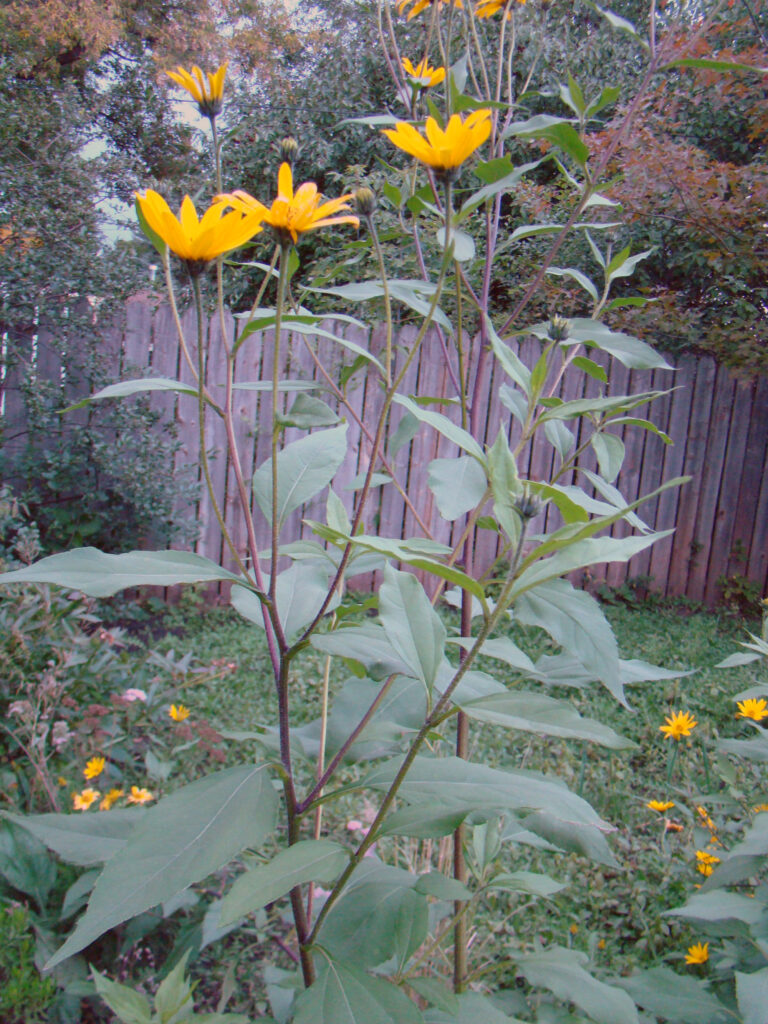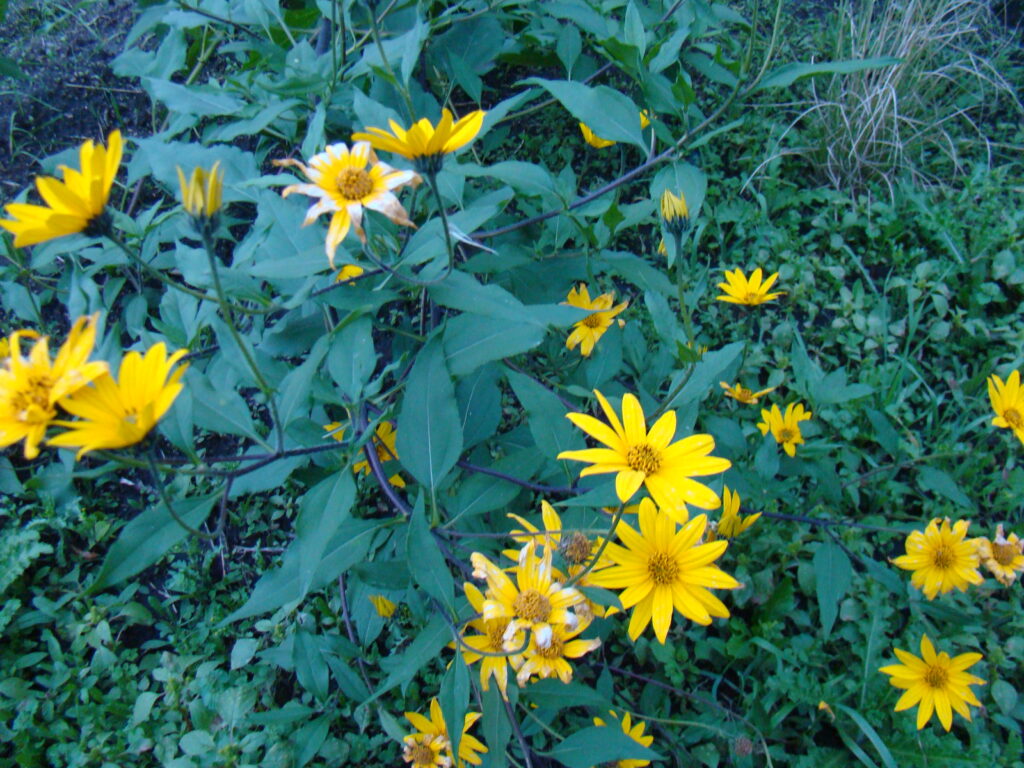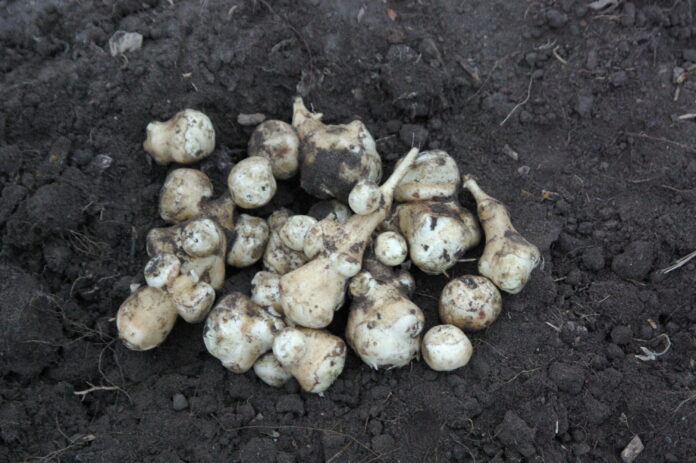by Jackie Bantle
Saskatchewan Perennial Society
When most of us think of artichokes, we think of the green scaley immature flower buds that can be found in the produce aisle at the grocery store. However, Jerusalem artichokes (Helianthus tuberosus), also known as sunchoke, are grown for their edible underground tubers and are a completely different plant than the globe artichoke. Jerusalem artichokes are native to North America, are extremely hardy and grow under most prairie conditions. Although they are sometimes referred to as ‘Canada’s potato’, fall is as excellent time to plant Jerusalem artichokes on the Prairies.
Jerusalem artichokes are one of the easiest plants to grow in a garden. Because they produce tubers underground, a sandy loam to loam soil is best for growth but any soil that is rich in nutrients and organic matter and free of rocks and hard clay lumps is suitable. As with any root crop, regular irrigation is beneficial (about 2.5cm/week) – especially in dry years.
The average days to maturity for most Jerusalem artichoke cultivars is 130. Tubers should be planted in late fall or early spring. Do not irrigate newly planted tubers in fall. Sourcing tubers for planting can be a challenge. Fall is the best time of the year to find tubers at your local farmer’s market. Some retail outlets will carry tubers in spring. Whether planted in spring or fall, tubers should be planted 10 cm deep, 30-35 cm apart within the row and 60-100 cm apart between rows. Each tuber piece should have at least two eyes or buds for planting.

In spring, hill plants once they reach 30cm in height: this will help provide stability to the tall stem. After plants have emerged, mulch the area around the plant with straw to help conserve moisture, reduce weed growth and regulate soil temperature. Extremely high soil temperatures reduce yields. To optimize tuber production, it is recommended to cut stems back to 1.5m in late summer and remove flower heads. In this way, excessive water and nutrients will not be lost to top growth but will be focused on bulking up tubers. One Jerusalem artichoke plant yields approximately 400g (1 lb)/plant, depending on the cultivar. Harvested tubers range in size from 5-8 cm across, 10 cm long and knobby. Tubers from more wild forms of Jerusalem artichoke are much more knobby and smaller than types that have been domesticated. Outer skin color of the tubers ranges from creamy white to brown to red. Flesh color is usually off white.
Like potatoes, Jerusalem artichokes respond well to nitrogen fertilizer. However, over-fertilizing Jerusalem artichokes will encourage excessive top growth and compromise tuber production. Top dressing plants in early spring with compost or well-rotted manure at least every two years will provide adequate fertility.

Sunchoke plants can grow up to 3m tall, depending on the cultivar. Plants grow relatively quickly and produce yellow sunflowers in mid-late summer that are 7-8 cm in diameter. The height of the plant suggests that Jerusalem artichokes can be used as a miniature shelter belt around smaller garden areas. They also provide a nice background plant along the north edge of a perennial bed.
It is best to harvest tubers late in fall and preferably after at least one killing frost. During the growing season, tops accumulate sugars. In late summer or early fall, the sugars are transferred to developing tubers. There are also several reports that the nutty flavour improves significantly after the first killing frost.
Ideal storage conditions for Jerusalem artichokes are 0˚C at 90-95% relative humidity. Jerusalem artichoke tubers are thin-skinned and do not store well unless kept moist in a root cellar or bagged in the refrigerator. Harvested tubers should be refrigerated for short term storage. For long term storage, tubers store best if kept in moist sand in a cool place. Tubers should not be washed prior to storage as the skin is easily damaged. Jerusalem artichokes are to be consumed like a potato tuber: boiled, baked, fried, in soups or stews or raw in salads.
This column is provided courtesy of the Saskatchewan Perennial Society (SPS; saskperennial@hotmail.com ). Check our website saskperennial.ca) or Facebook page (facebook.com/saskperennial). All Saskatchewan Perennial Society events are on hold until further notice.


